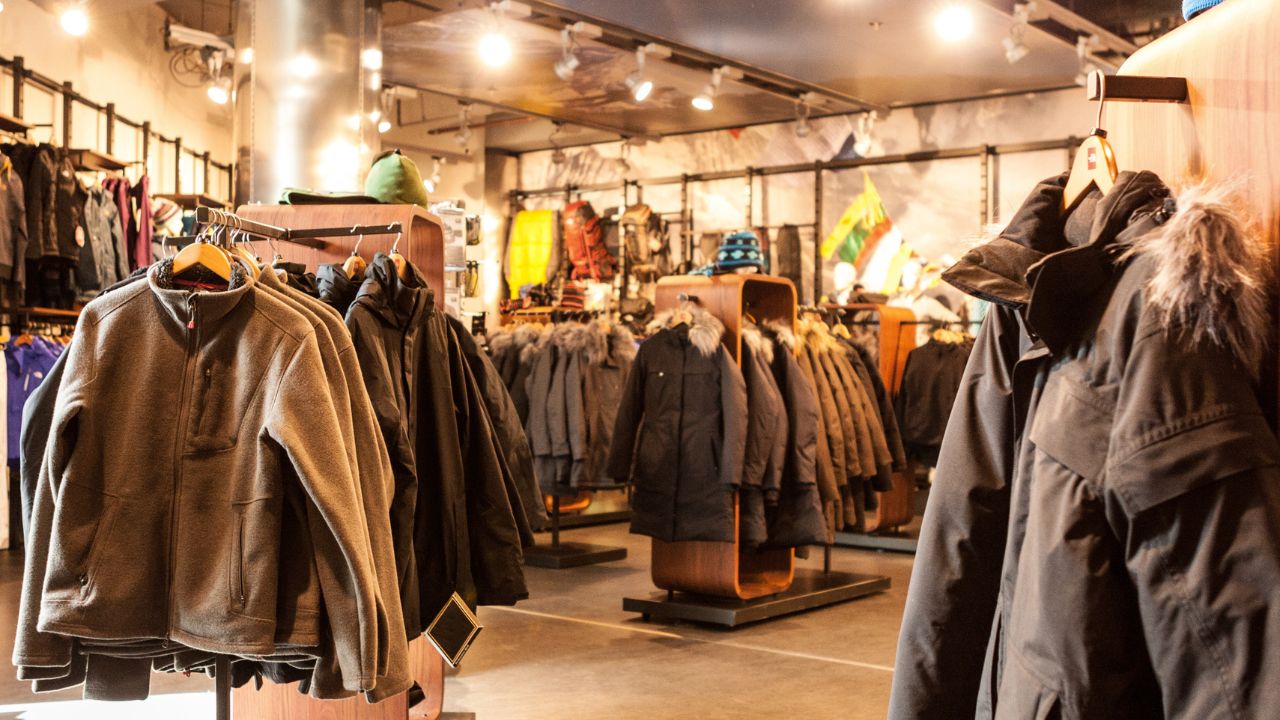Retail merchandising is a pillar of success in the retail industry. It involves arranging, displaying, and promoting products in-store and online boosts sales and improves customer satisfaction. By showcasing products in a way that attracts shoppers, retailers can turn visitors into buyers and build customer loyalty.
This blog will explain what retail merchandising is. It will discuss why it is important in retail. Additionally, we will also examine how businesses can create a successful retail merchandising strategy.
We will examine key areas. These include store layouts and inventory management. We will also explore how visual merchandisers influence the shopping experience.
What Is Retail Merchandising?
Retail merchandising encompasses a wide range of activities to attract customers and encourage purchases. At its core, retail merchandising is the art and science of showcasing products to maximize their appeal.
Designers create visual elements like window displays, product arrangements, and store layouts to catch attention. They spark interest and help customers decide to buy.
However, retail merchandising extends beyond aesthetics. It also includes managing inventory, setting prices, and using digital tools. These tools, like social media, help connect with shoppers in real time. Thus, when you shop at a store or online, every moment adds to your shopping experience.
The Goals of Retail Merchandising
The primary goals of retail merchandising are to:
- Attract customers to the store or website.
- Create a seamless and engaging shopping experience.
- Improve inventory turnover by selling the right products at the right time.
- Encourage impulse buys through strategically placed product displays.
- Build brand loyalty and increase sales over time.
Why Retail Merchandising Matters
Retail merchandising is not just about making a store look good. It also plays an important role in business profits and customer satisfaction. Here’s why it matters:
1. Attracts Customers and Drives Foot Traffic
Eye-catching displays and dynamic store layouts have the power to stop customers in their tracks. For example, a well-designed window display can pique curiosity, drawing customers into the store to explore its offerings.
Visual merchandisers are very important. They use their creativity to create displays. These displays tell a story and show off the retailer’s best products.
2. Enhances the Shopping Experience
From the moment a customer enters the store until they check out, every part of the store matters. A well-organized store with clear signs, easy-to-use product displays, and clean fitting rooms can create a pleasant shopping experience. On the other hand, a poorly organized store or cluttered fitting rooms may deter even the most loyal customers.
A good retail merchandising strategy can make shopping more enjoyable. This includes clear signs, easy-to-use product displays, and clean fitting rooms.
3. Maximizes Sales Potential
Strategically placed product displays encourage customers to explore more of the store, leading to increased purchase opportunities. For instance, items placed at eye level or near the checkout counter are particularly effective at prompting impulse buys. Additionally, a mix of product bundles and promotions can further encourage larger transactions.
4. Builds Brand Identity
Successful retail merchandising isn’t just functional — it’s also a key component of branding. Consistency in-store branding, from the colors to the layout, creates a memorable shopping experience. For instance, a brand that emphasizes sustainability may highlight eco-friendly products in dedicated displays, reinforcing its brand message.
5. Bridges Physical and Digital Touchpoints
With the rise of e-commerce, retail merchandising now extends beyond the physical store. In addition, digital marketing is important for keeping a strong brand presence. Showcasing products on social media helps engage online shoppers. Offering interactive virtual store layouts also attracts customers.
Essential Components That Make Retail Merchandising Effective
To understand what retail merchandising entails, it’s essential to break it down into its vital components. Below are some of the elements that create a successful retail merchandising strategy.
1. Window Displays
Window displays are often the first interaction a customer has with a retail store. A striking, creative display serves as an invitation to step inside. Marketers often feature seasonal themes, promotional items, and new arrivals to create excitement and curiosity.
2. Visual Merchandising
Visual merchandisers design the overall aesthetic appeal of the store. They are responsible for creating store layouts that help customers move around and design eye-catching displays to showcase new or popular products.
They also design eye-catching displays. These displays show new or popular products. Their work ensures that the store is visually cohesive and appealing to the target audience.
3. Store Layouts
Well-thought-out store layouts ensure that customers can easily browse and find what they need. Retailers often use different layouts. These include grid designs, free-flowing layouts, and boutique-style arrangements. Choosing the right layout depends on the store’s size and theme.
A good layout encourages customers to spend more time exploring, which often results in additional purchases.
4. Product and Store Displays
Product displays, like tables with “bestsellers” or shelves with organized items, highlight specific products. Retailers use these displays to highlight new arrivals, seasonal items, or promotions, aiming to encourage customers to explore further.
5. Inventory Management
Retail merchandising relies on efficient inventory management to succeed. Stocking shelves with the right products at the right time is crucial. Real-time inventory tracking ensures that popular items are always available, avoiding customer disappointment and lost sales.
6. Fitting Rooms
Fitting rooms are instrumental in conversion rates for apparel retailers. Well-maintained fitting rooms are clean, well-lit, and accessible significantly improves customer satisfaction. Customers who try on items in a well-maintained fitting room are more likely to finalize purchases.
7. Customer Experience
Every element of retail merchandising contributes to the overall customer experience. Friendly staff, easy navigation, and real-time help all matter. These details help build strong relationships with customers.
8. Marketing Integration
Social media platforms and email marketing campaigns now amplify retail merchandising efforts. Posting images of window displays or promoting exclusive deals through Instagram stories extends the reach beyond the physical store.
9. Data-Driven Merchandising
Successful retail merchandising increasingly relies on data. Real-time customer behavior tracking, inventory turnover rates, and point-of-sale analytics help retailers craft personalized experiences and optimize their merchandising strategies.
How to Build a Successful Retail Merchandising Strategy
Building a retail merchandising strategy requires careful planning and execution. Here are some steps to consider:
Step 1: Know Your Target Audience
Understanding the preferences and shopping habits of your customers is the foundation of an effective strategy. Conduct surveys, analyze purchase data, and observe customer behavior to align your strategy with their expectations.
Step 2: Define Your Objectives
Set clear goals for your merchandising efforts. Are you looking to boost sales for a particular product? Do you want to encourage customers to spend more time in your store? Specific objectives make it easier to measure the success of your strategy.
Step 3: Curate Products Carefully
Choose products that resonate with your audience. Whether it’s special items or best-selling collections, make sure your merchandising highlights exceptionally appealing products.
Step 4: Invest in Eye-Catching Displays
Update your window displays and in-store arrangements regularly to keep things fresh and exciting. Experiment with themes, colors, and layouts to create displays that draw attention.
Step 5: Integrate Digital Tools
Leverage technology to enhance your retail merchandising efforts. Use social media to promote special displays or exclusive deals. You might also add an online feature, like virtual store tours, for e-commerce outreach.
Step 6: Monitor and Optimize
Track performance metrics such as foot traffic, sales data, and customer feedback. Regularly analyze this data to identify areas for improvement and refine your merchandising strategy over time.
Real-Life Examples of Successful Retail Merchandising
- Apple: Apple stores are renowned for their minimalistic layouts and engaging product displays. Every detail is important. This includes the placement of demo products and the appearance of the Genius Bar. The designers created all of this to make shopping easy and innovative.
- Starbucks: Starbucks excels at leveraging seasonal product displays to create a sense of urgency and excitement. Their promotions often tie in with broader marketing campaigns to deliver a cohesive customer experience.
- IKEA: With smart store layouts and engaging product displays, IKEA helps customers see how products fit into their lives. Their mock rooms and fitting space displays are perfect examples of effective retail merchandising.
Take Your Retail Merchandising to the Next Level
Retail merchandising is an essential tool for engaging customers, driving sales, and building a strong brand identity. By using smart displays, well-planned store layouts, and strong marketing strategies, businesses can succeed in a tough market.
Want to optimize your merchandising strategy and take your store’s performance to new heights? At Marketing Immersion, we specialize in providing actionable advice that empowers businesses to thrive. Contact us today to learn how we can help you create a great retail experience. This will attract customers and keep them coming back.






